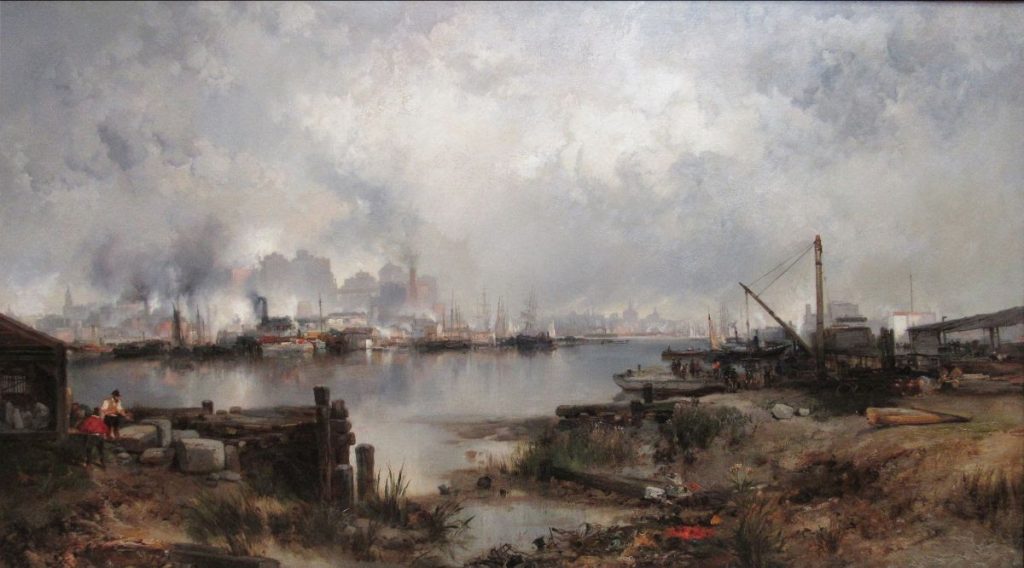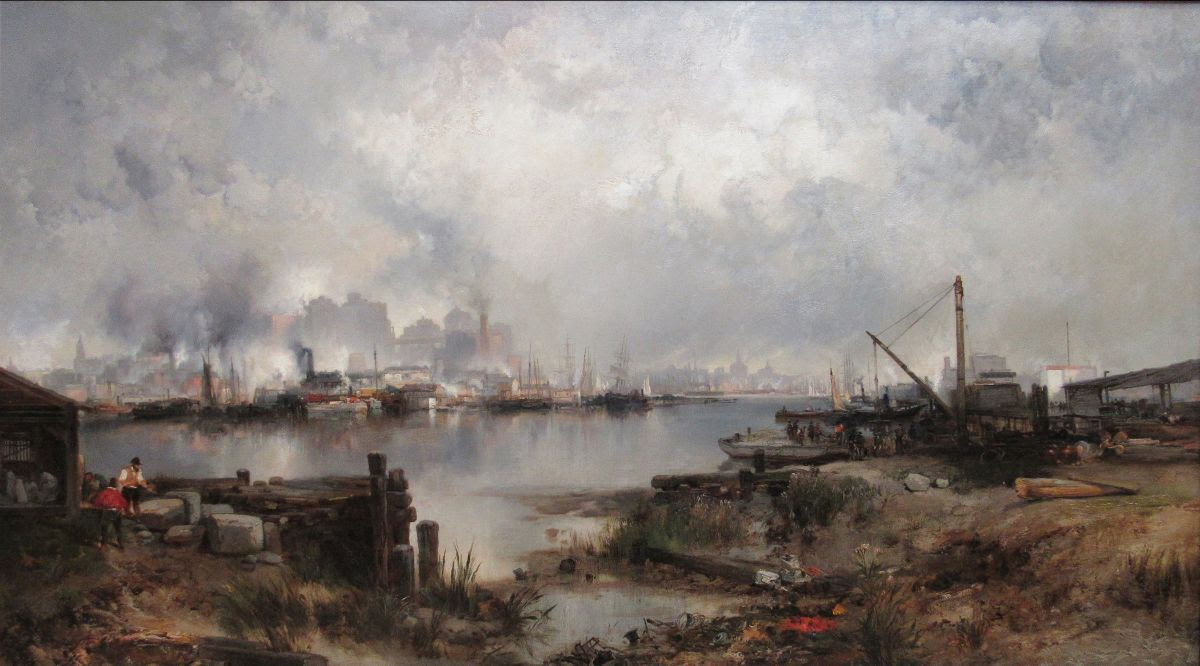
Depicting the Industrialization of the Hudson River in Artistic Representations

**”Shifting Shorelines: Art, Industry, and Ecology Along the Hudson River” — A Deep Dive into the Environmental Legacy of an Iconic Landscape**
The Hudson River has long been a subject of artistic fascination, especially during the mid-19th century with the emergence of the Hudson River School. The group of American landscape painters, led by Thomas Cole, romanticized the awe-inspiring natural beauty of the Hudson River Valley and surrounding areas. However, a current exhibition at Columbia University’s Wallach Art Gallery, titled *”Shifting Shorelines: Art, Industry, and Ecology along the Hudson River”*, takes a deeper and more critical look at its complex legacy. It explores the river’s not only celebrated landscapes but the often obscured histories involving Indigenous life, ecological changes, industrial development, enslavement, and social control.
### A New Perspective on Past and Present
The works selected for *Shifting Shorelines* do more than glorify the still waters and majestic mountains of the Hudson River, as was typical of the Hudson River School. Instead, the curatorial team, including Annette Blaugrund, Betti-Sue Hertz, Elizabeth Hutchinson, and Dorothy Peteet, brings together art that weaves in the elements often absent from earlier portrayals. As visitors walk through the exhibition, they are guided through thematic groupings that touch on a variety of intertwined histories and viewpoints reflecting a more holistic understanding of the river and its surroundings.
While there are still examples of idyllic landscapes, such as Thomas Cole’s *”North Mountain and Catskill Creek” (1838)*, these are juxtaposed with works that document the industrial scars left on the landscape. This includes paintings like George Benjamin Luks’s *”Roundhouse at High Bridge” (1909–10)*, which portrays a Bronx skyline darkened almost to monochrome by industrial pollution, and Daniel Putnam Brinley’s *”Hudson River View (Sugar Factory at Yonkers)” (c. 1915)*, where factory buildings clutter the natural environment. These juxtapositions challenge the romantic and pristine narratives of landscapes, addressing human impact head-on.
### Indigenous Stories and Environmental Narratives
Through contemporary artworks, the exhibition grounds the natural beauty of the Hudson River into the narrative of time and human intervention. Anthony Papa, for example, offers a unique and poignant perspective from a personal experience. His mid-1990s paintings, created while incarcerated at the Sing Sing Correctional Facility, depict the river through the harsh barriers of the prison’s barbed-wire fences. This visual barricade evokes not only physical imprisonment but also hints at the systemic control exerted on both people and natural landscapes.
Similarly, Alan Michelson’s 31-minute film “Shattemuc” (2009) brings attention to Indigenous histories of the river. “Shattemuc,” a Native term for the Hudson River, is aligned with intense modern-day surveillance, as Michelson uses a searchlight to trace over the river’s shores in the nighttime. The changing illuminations create an almost haunting but reflective atmosphere, reminding viewers of past livelihoods and present realities.
Anthony LaTocha’s work, *”The Discovery of Slowness” (2022)*, provides a more abstract approach, addressing ecological and temporal shifts in the landscape. Presenting the Hudson’s story through ink washes and lead impressions from outcropped rocks, her piece places human influence in nature as fleeting relative to the immensity of geological time.
### Industrial and Infrastructural Imprints
One of the more poignant components of the exhibit is its focus on the industrial reshaping of the Hudson River’s landscape. Works delve into the environmental and social costs induced by what were once celebrated advances in America’s industrial history.
The 2006 piece, “A Journey up the Hudson River from the Battery to Troy,” created by The Center for Land Use Interpretation, takes viewers on a visual tour of the industrial infrastructure that lines the shores of the Hudson River today. It documents factories, bridges, and power plants, offering a sobering reminder that while some seek to preserve the river’s aesthetic glory, the forces of industrial progress have carved their own, less glamorous mark on the river’s ecosystem and communities.
Many pieces also emphasize labor histories, such as the role of enslaved individuals and immigrant workers. Visual remnants like the *oyster jars* on display, some dating back to as early as the 18th century, highlight a bustling yet exploitative industry. These objects serve as a testament not only to the river’s once-thriving oyster trade but also to the complex social commerce that shaped the river’s coasts.
### Queer and Bohemian Histories
In addition to industrial and environmental histories, *Shifting Shorelines* also shines a spotlight on Manhattan’s west side piers, a site with profound significance for New York’s queer and bohemian communities during the 1970s and 1980s. Artists